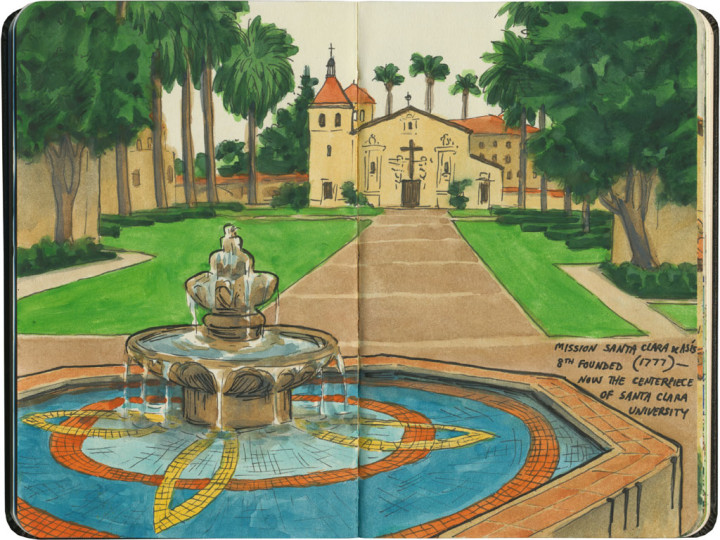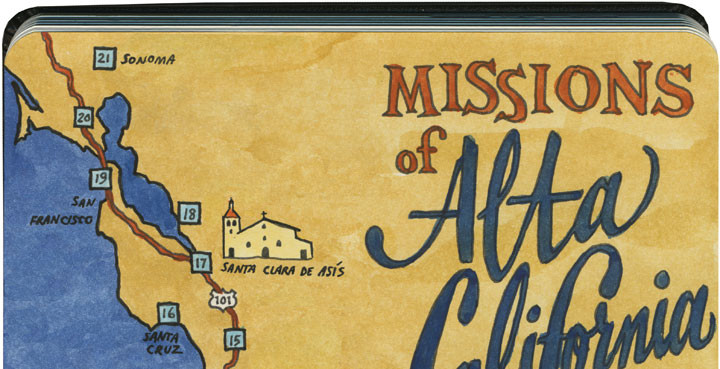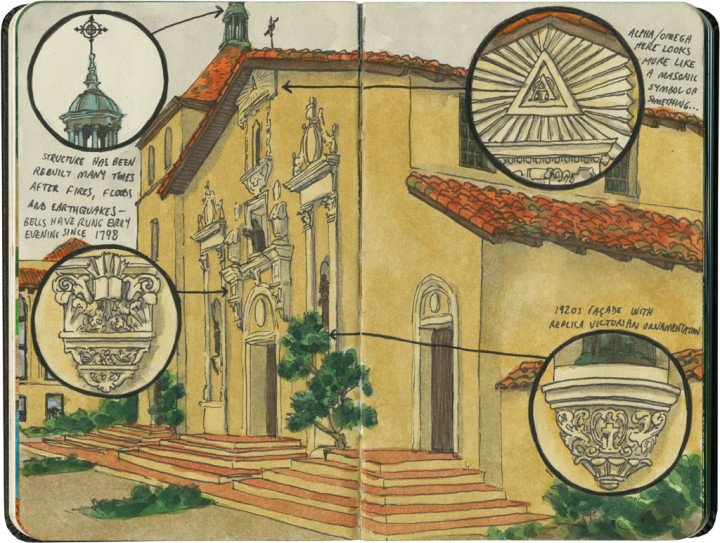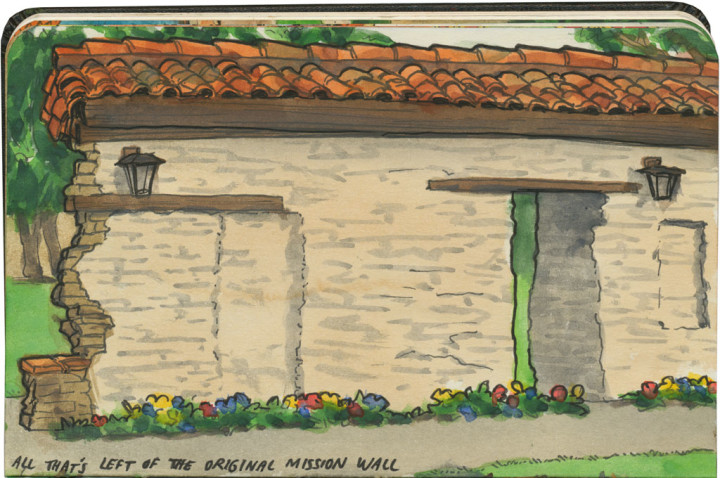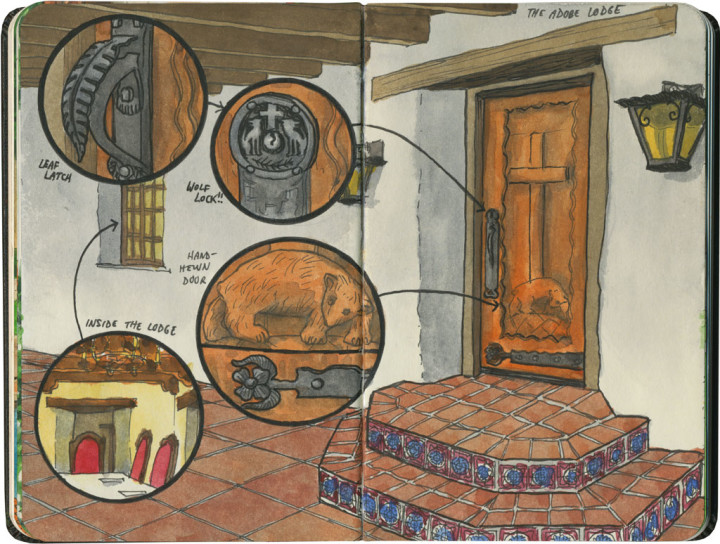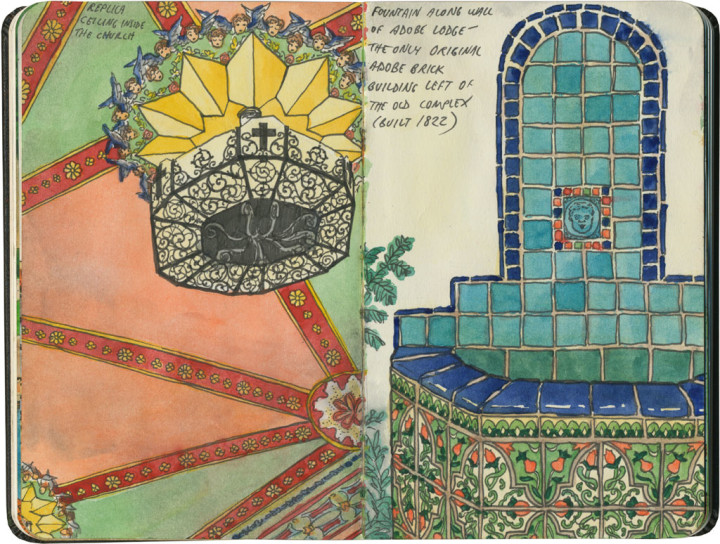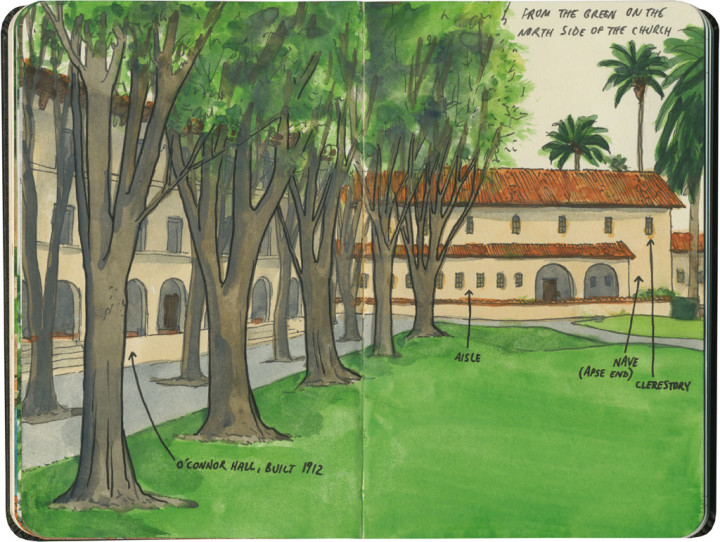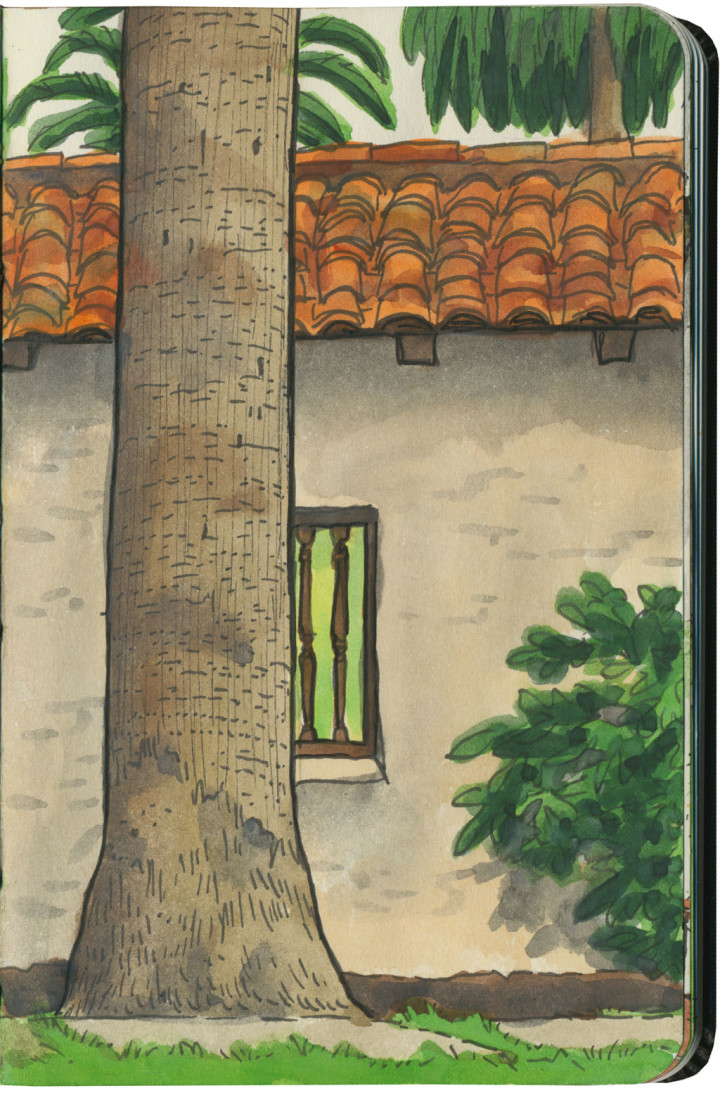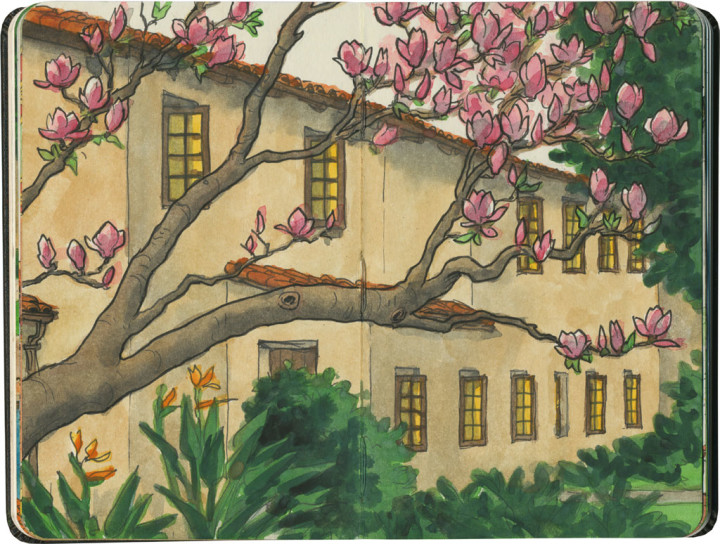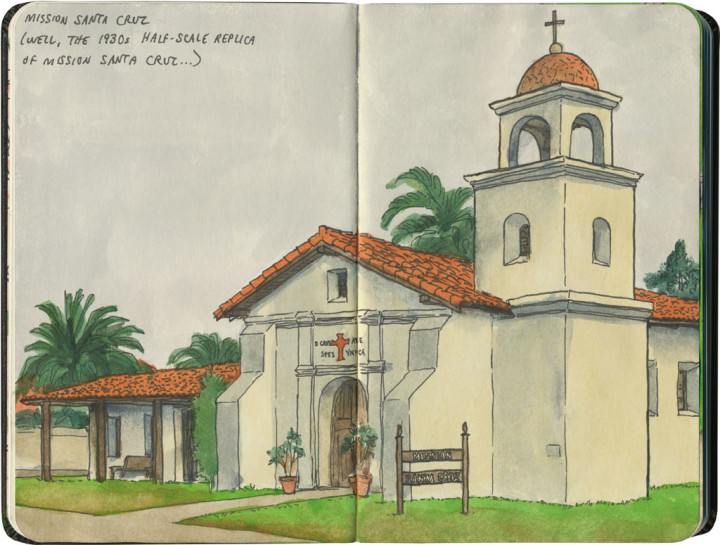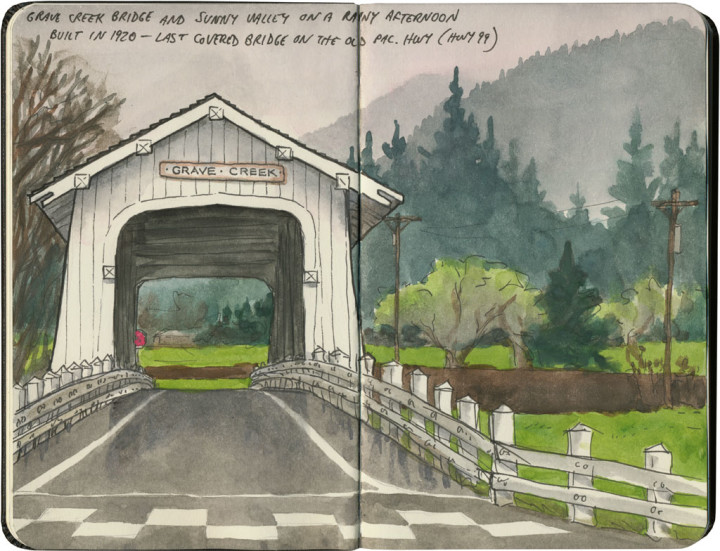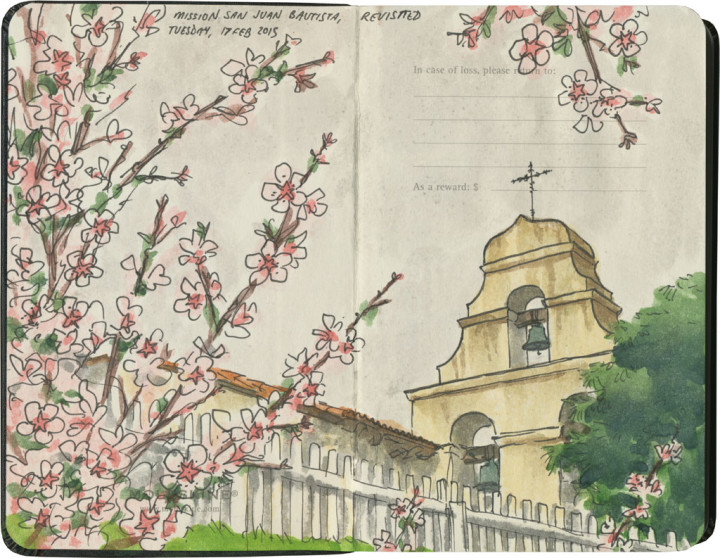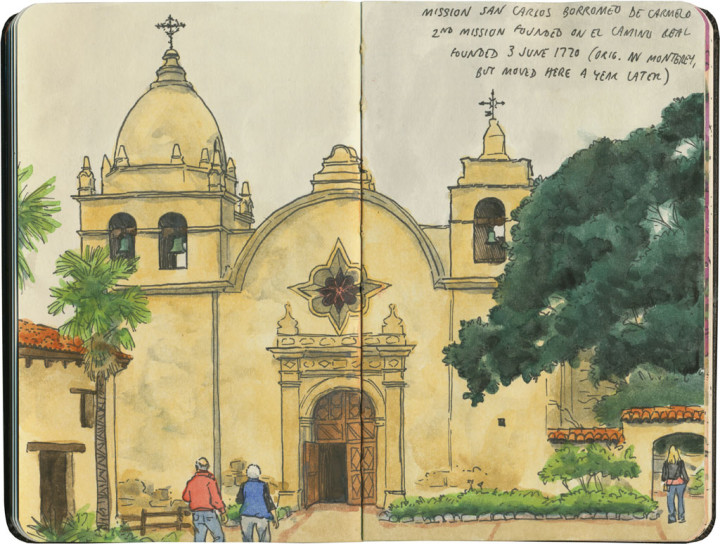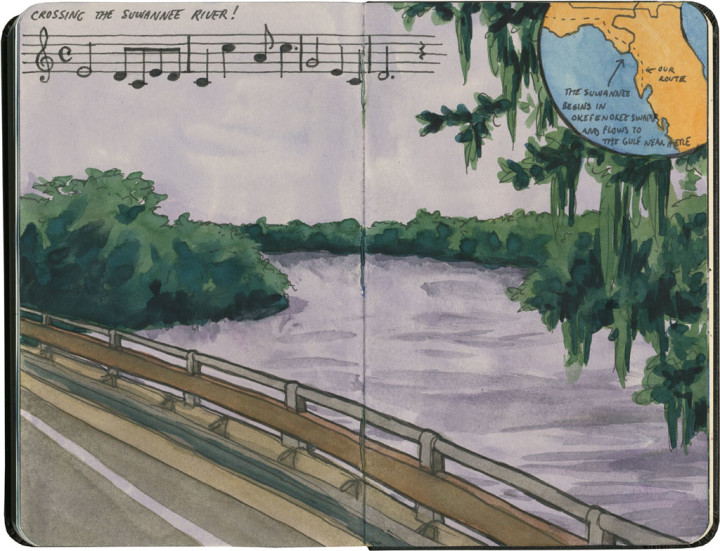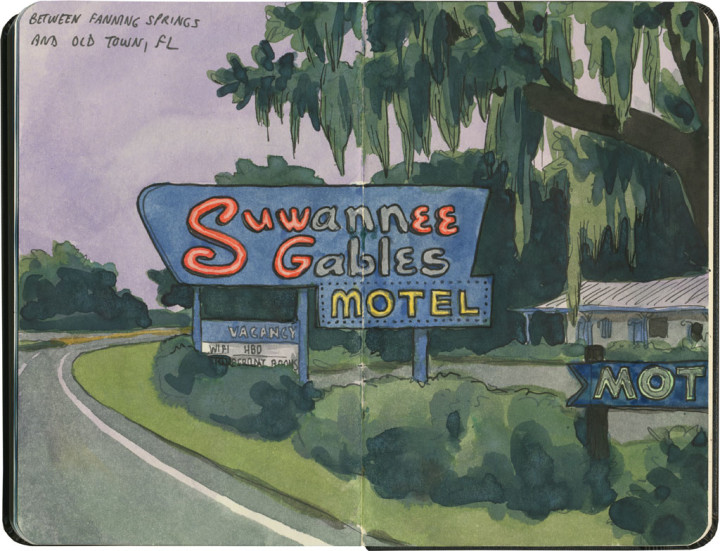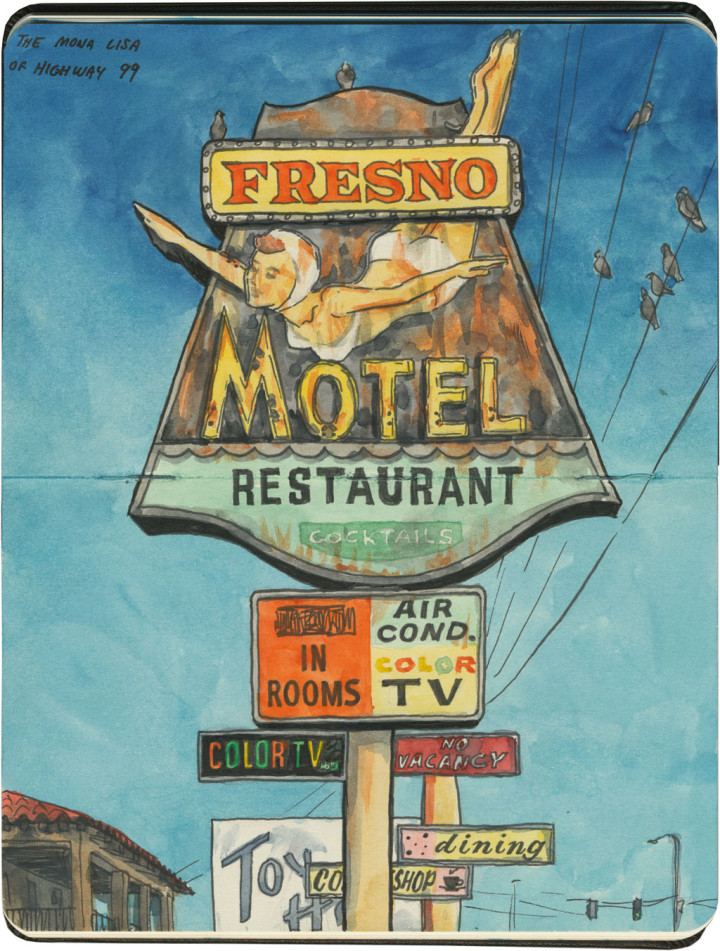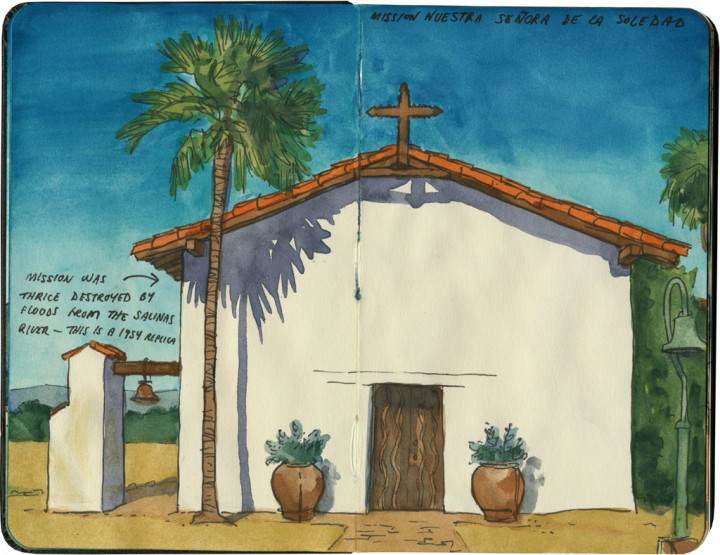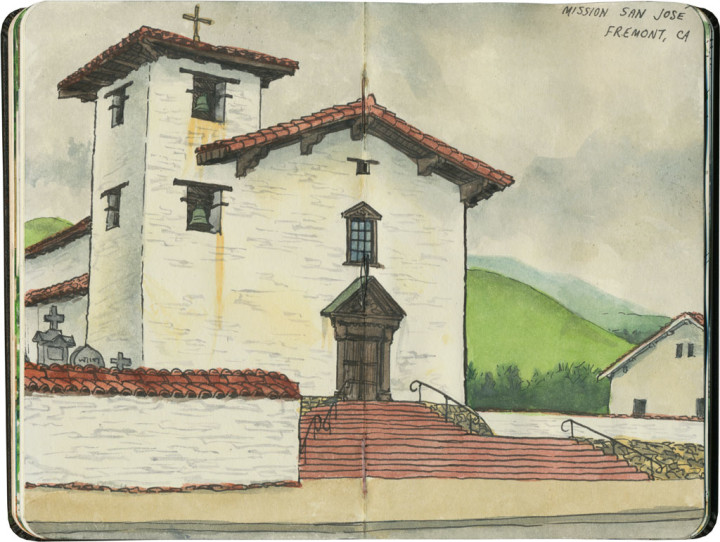
This is the eighteenth installment of my Mission Mondays series, exploring all 21 Spanish Missions along the California coast. You can read more about this series, and see a sketch map of all the missions, at this post.
This place might be a little confusing if you let yourself get tripped up by the name. Mission San José is not actually in San Jose—Santa Clara is the mission upon which the city of San Jose is founded. Mission San José is further north, on the east side of the Bay and in the modern-day suburb of Fremont. It’s perched on the edge of the Contra Costa hills, surrounded by a Gold Rush-era enclave that’s itself surrounded by contemporary ‘burbs. Clear as mud, right?
Mission San Jose isn’t the northernmost in the chain, but because of its location on the east side of the Bay, it was actually the very last one I visited. In fact, its location rather defies the “rule” of placing the missions a day’s horseback ride apart from one another—unless you put your horse on a boat to cross the bay to San Francisco, I suppose.
Once again, what’s there now is a totally a rebuilt mission—but the place is a pleasant surprise. Of all the replicas, this one is possibly the most faithful to the original style of architecture.
Even the interior of the church is authentic in every detail. I loved the wooden, unadorned ceiling.
They even managed to preserve some old wall remnants and original foundations, creating a nice mix of old and new. The overall result has some of the character of a place like San Juan Capistrano, and the tidiness of the restored missions like San Luis Obispo.
So while the northern missions might not all have the style and substance of the ones in the south, there’s still plenty that’s worth discovering. And this one, in particular, is well worth making a pilgimage to the ‘burbs.





